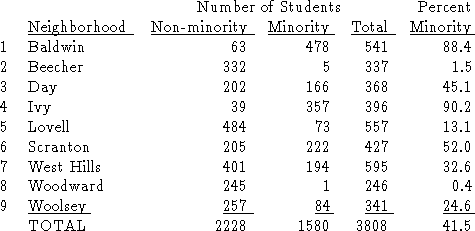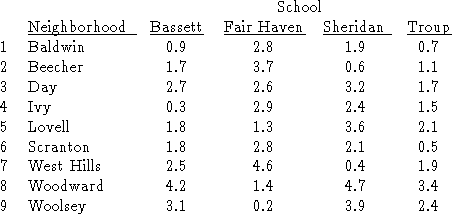
Table 7: Exhibit 2. Racial Characteristics of Neighborhoods, 1964-1965
Exhibit 2 shows the estimated number of junior high school pupils by race and neighborhood for the 1964-1965 school year. If the existing assignments of neighborhoods to junior high schools were to remain in effect in 1964-1965, the estimated fraction of minority students in each school would be 81 percent at Bassett, 14 percent at Fair Haven, 21 percent at Sheridan, and 68 percent at Troup, the change from 1963-1964 being due to redistricting planned to reduce busing costs. Overall, the junior high schools would have 41.5 percent minority students.

Table 7: Exhibit 2. Racial Characteristics of Neighborhoods, 1964-1965
Optimal enrollments for each junior high school are shown in Exhibit 1. In the past, the School Board has tried to keep each school within twenty percent of these enrollments. Thus, for example, the Board tried to keep Troup's enrollment between 800 and 1200.
Exhibit 3 shows the distances in miles from the approximate center of each neighborhood to each of the junior high schools. All of the neighborhoods are similar enough that the cost of busing students from any neighborhood to any school is simply a factor of the busing distance. Fortunately, the city is small enough so that none of these distances was considered by the Board to be prohibitive. This gave the Board the freedom to send children from any neighborhood to any school.
Beginning in the fall of 1963, the Board began to formulate an integration plan. It sought to minimize the total distance traveled by children on school buses while integrating all New Haven schools to an acceptable level.

Table 8: Exhibit 3 Road Distances (miles) from Neighborhoods to Schools